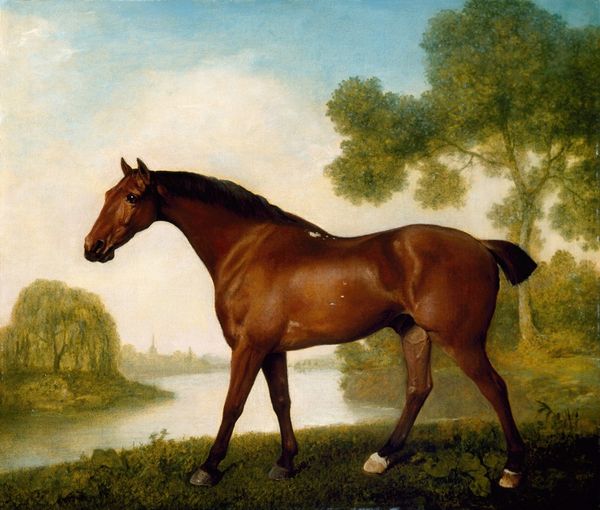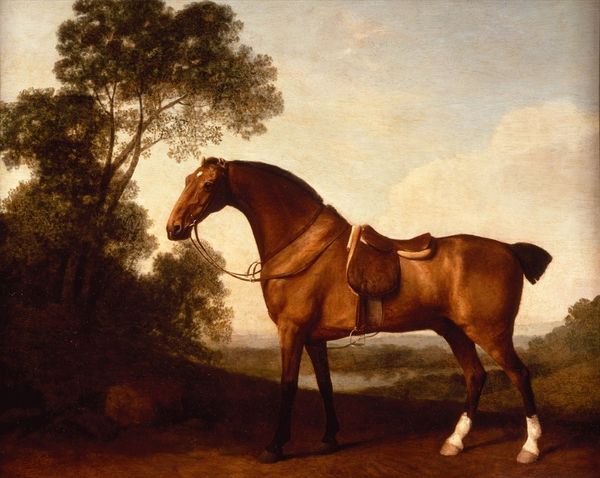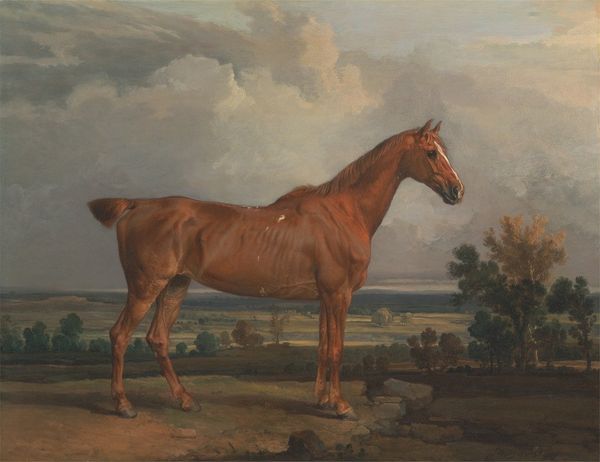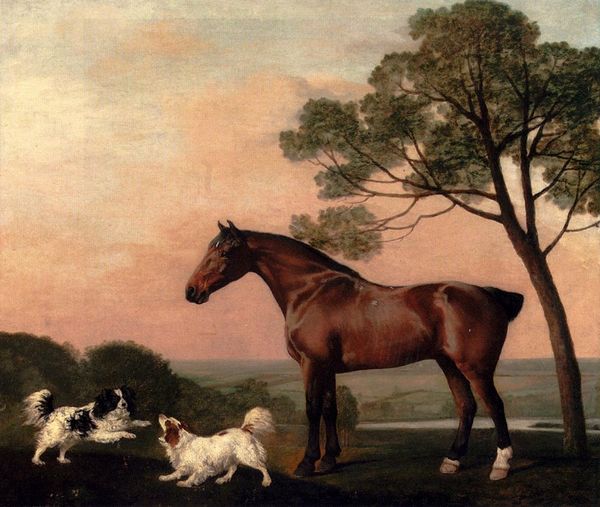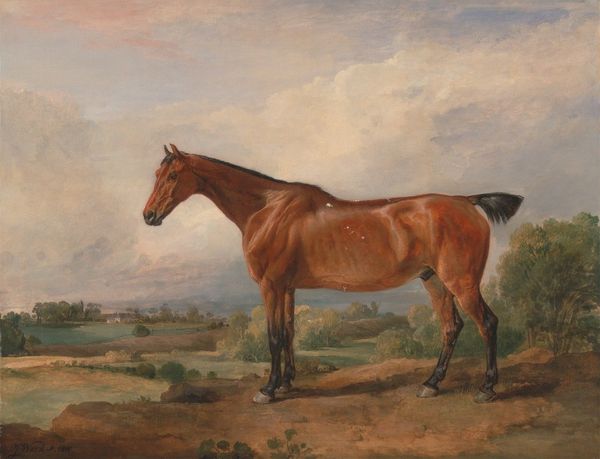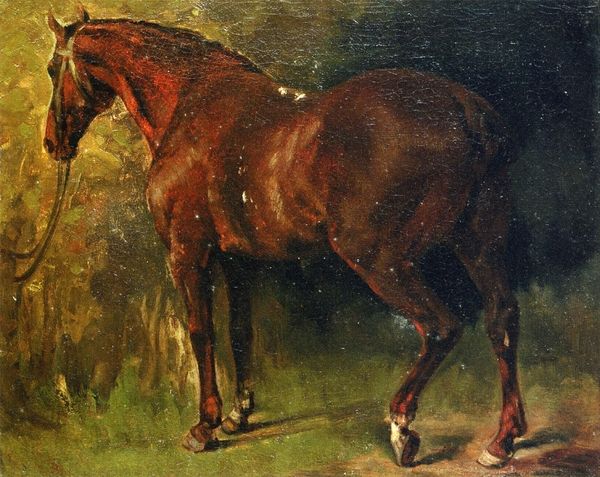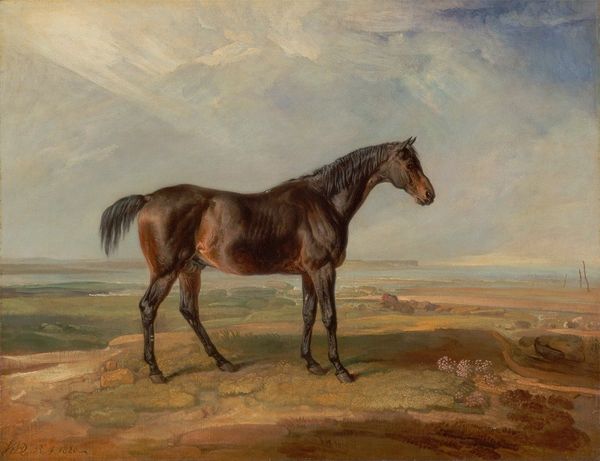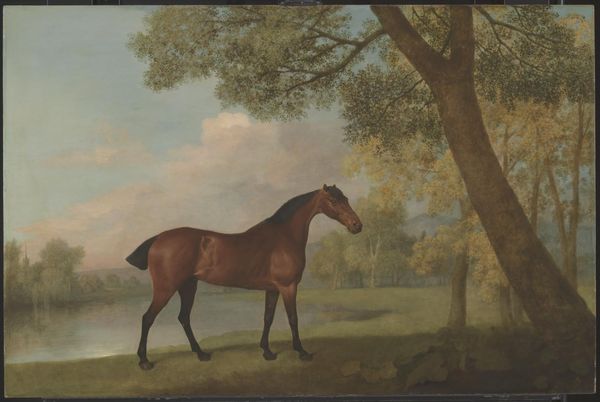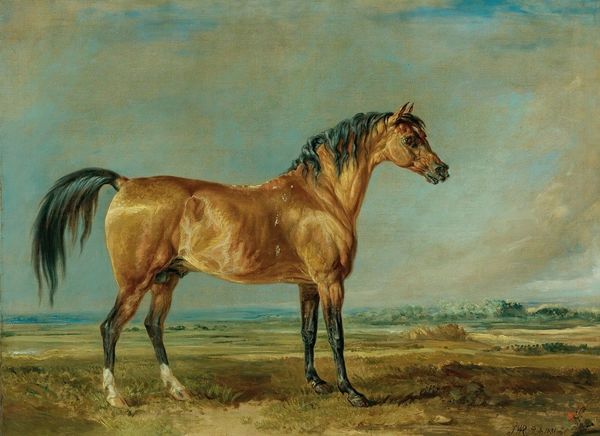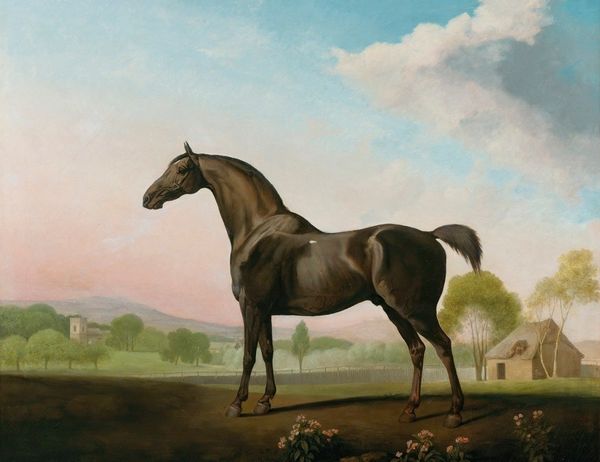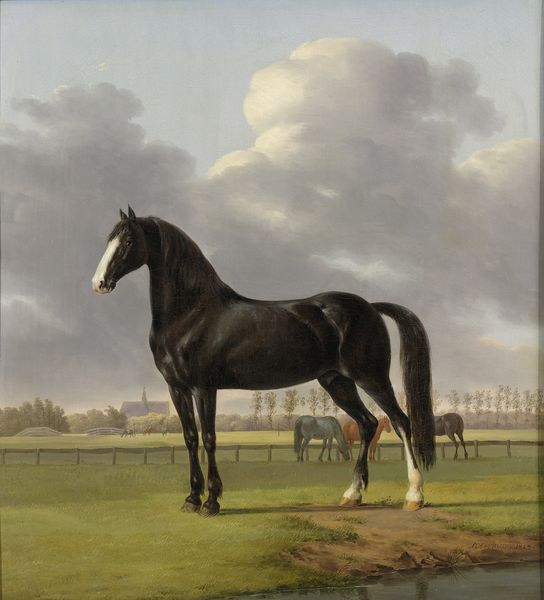
painting, oil-paint
#
portrait
#
animal
#
painting
#
oil-paint
#
landscape
#
oil painting
#
animal portrait
#
horse
#
genre-painting
#
academic-art
#
realism
Dimensions: 61 x 70.2 cm
Copyright: Public domain
Editor: Here we have "A Chestnut Racehorse," an oil painting by George Stubbs. It's essentially a portrait of a horse in a somewhat sparse landscape. What strikes me is the stillness. It’s like the horse is pausing, almost contemplative. What do you see in this piece? Curator: That stillness is deceptive. Stubbs was deeply embedded within the Enlightenment’s project of categorizing and controlling the natural world. This painting, therefore, isn’t simply a celebration of the horse, but a complex engagement with power, class, and the commodification of animals in 18th-century Britain. What is the historical significance of the horse? What roles has it played in class struggles? Editor: So you're suggesting that the painting's serene surface masks underlying social and political tensions? The horse as a status symbol? Curator: Exactly! Consider the rising popularity of horse racing amongst the aristocracy during this period. Stubbs was employed by wealthy landowners to immortalize their prized animals. These paintings functioned as a kind of visual bragging right, reinforcing existing social hierarchies. And that meticulous anatomical detail wasn't just about scientific accuracy; it was about asserting control over the natural world through knowledge. How does this shift your perspective on that initial sense of stillness? Editor: It makes the painting feel less peaceful and more like a display of ownership and control, a portrait of power dynamics disguised as an animal portrait. The horse isn't pausing, it's posed, made docile. Curator: Precisely. By interrogating the social context, we reveal the latent power dynamics at play. Art is never neutral, always positioned within relations of power, class and race. Editor: That’s a very different reading than the initial impression I had. Thanks for providing the bigger picture! Curator: My pleasure. It is critical to see Art History as part of societal power dynamics and hierarchies.
Comments
No comments
Be the first to comment and join the conversation on the ultimate creative platform.
